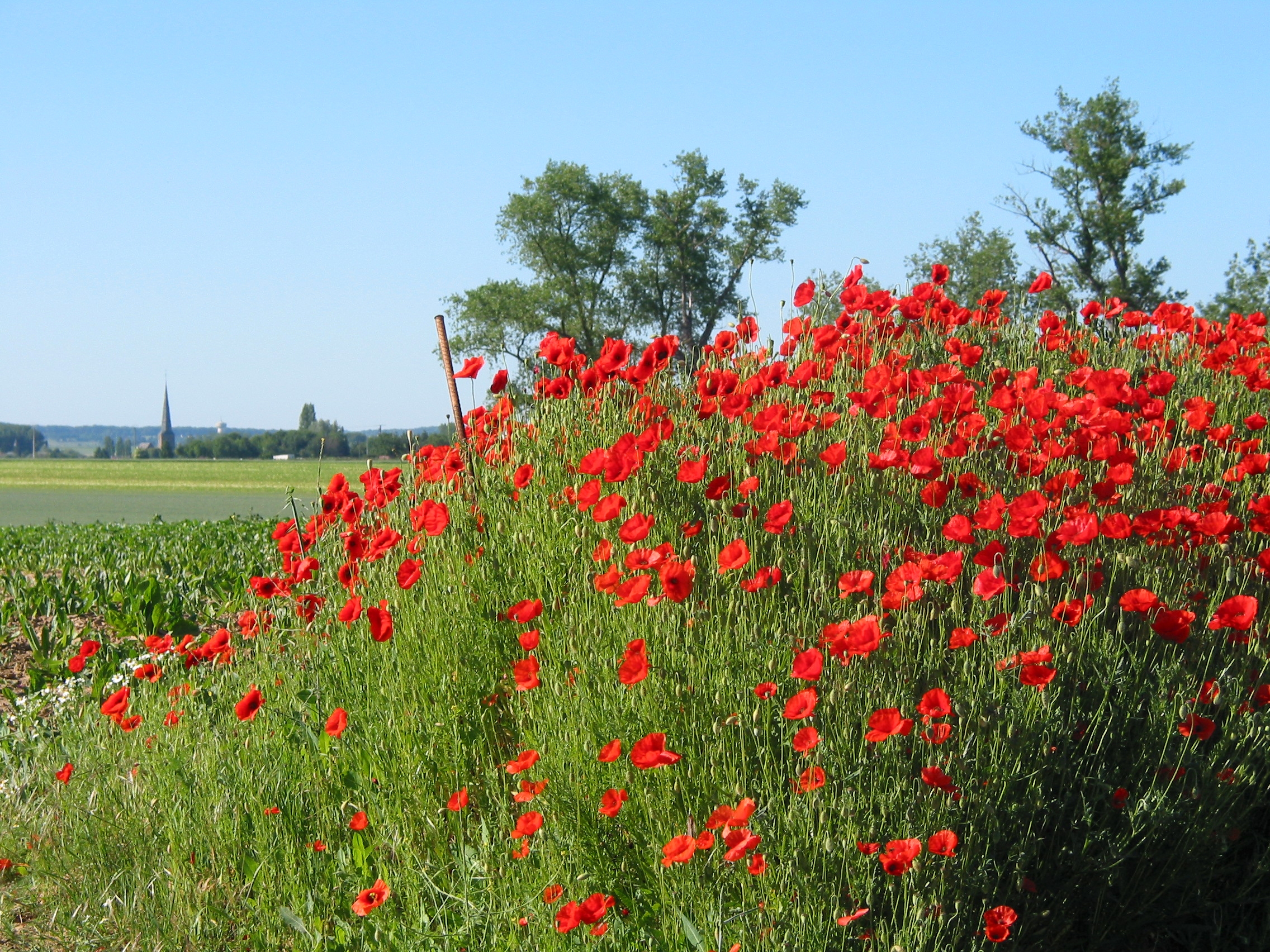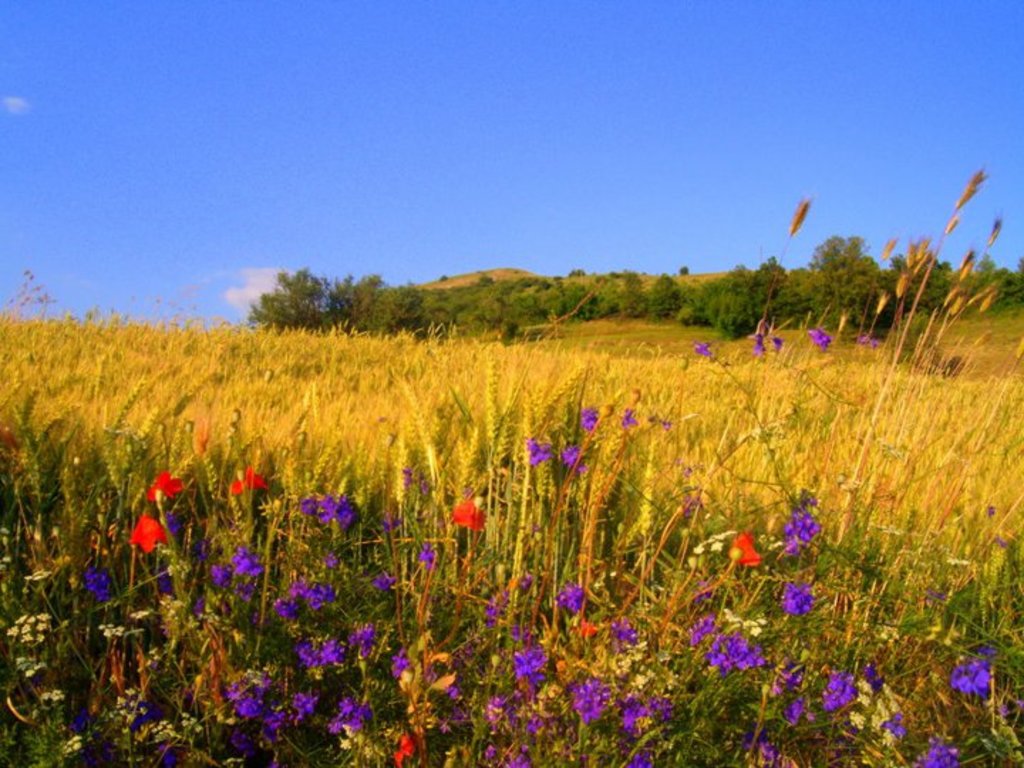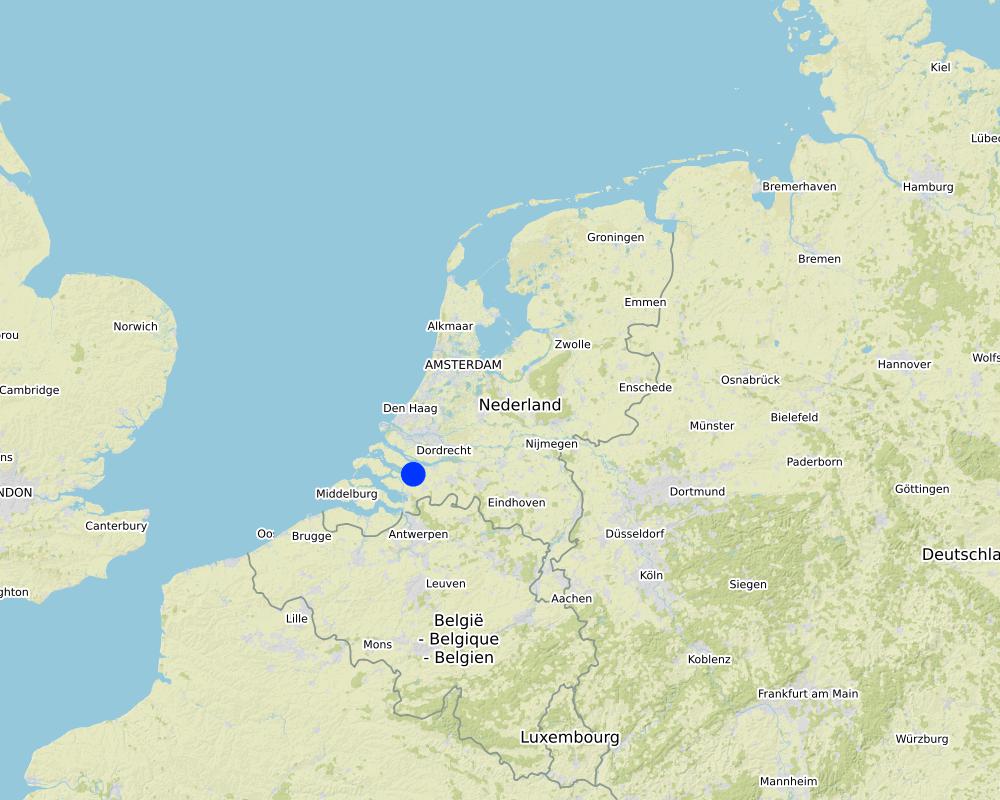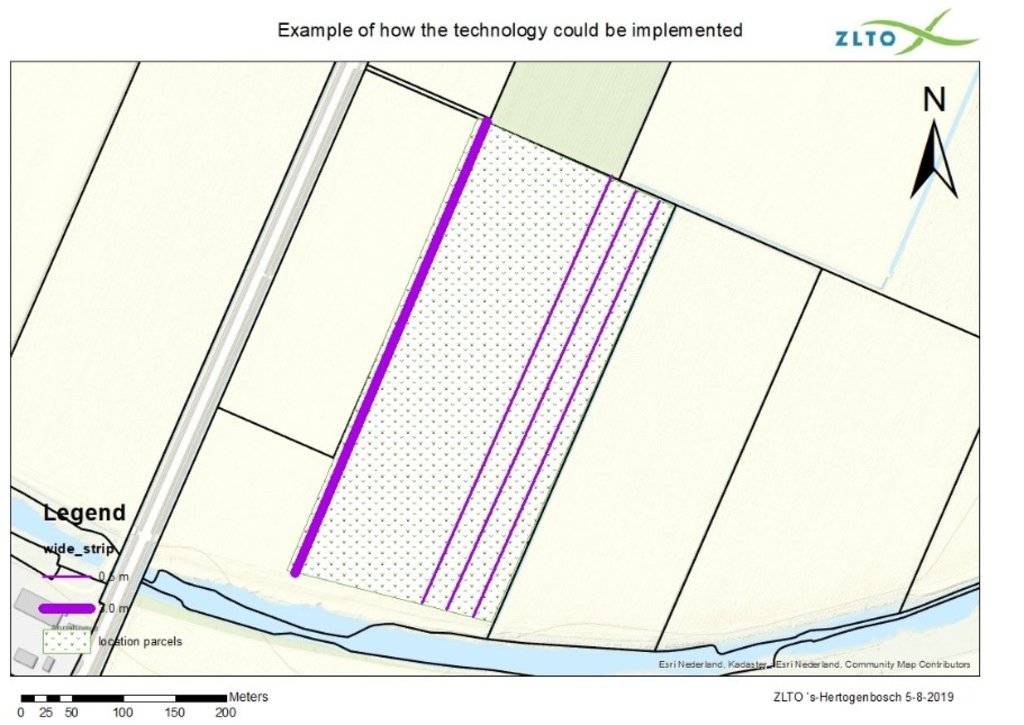Flower strips on paths within crops to support functional agrobiodiversity [荷兰]
- 创建:
- 更新:
- 编制者: Alan Radbourne
- 编辑者: David Robinson, David Norris, Sabine Reinsch
- 审查者: Renate Fleiner, William Critchley
FAB-randen in het spuitspoor
technologies_5381 - 荷兰
查看章节
全部展开 全部收起1. 一般信息
1.2 参与该技术评估和文件编制的资源人员和机构的联系方式
关键资源人
co-compiler:
Hoogendijk Tijmen
Southern Agriculture and Horticulture Organization (ZLTO)
荷兰
土地使用者:
Maris Pieter
V.O.F. Maris-Geluk
荷兰
SLM专业人员:
Dieleman Wico
Southern Agriculture and Horticulture Organization (ZLTO)
荷兰
SLM专业人员:
Lavet Laura
Southern Agriculture and Horticulture Organization (ZLTO)
荷兰
有助于对技术进行记录/评估的项目名称(如相关)
European Interreg project FABulous Farmers有助于对技术进行记录/评估的机构名称(如相关)
UK Centre for Ecology & Hydrology (CEH) - 英国有助于对技术进行记录/评估的机构名称(如相关)
Zuidelijke Land en Tuinbouw Organisatie (ZLTO) - 荷兰1.3 关于使用通过WOCAT记录的数据的条件
编制者和关键资源人员接受有关使用通过WOCAT记录数据的条件。:
是
1.4 所述技术的可持续性声明
这里所描述的技术在土地退化方面是否存在问题,导致无法被认为是一种可持续的土地管理技术?:
否
2. SLM技术的说明
2.1 技术简介
技术定义:
Flower strips are established on arable crop access paths to attract and support natural enemies to control and decrease crop pests
2.2 技术的详细说明
说明:
Planting flower strips to provide nectar and pollen to attract beneficial insect species that can help control pests is a well-known and well-used technology in the arable dominated South-West of the Netherlands. The use of such wildflower strips is increasingly being used across the world. Usually these wildflower strips are planted in bands around the edge or through the middle of a crop field.
This technology describes an interesting experiment that aims to see if it is more beneficial to establish several smaller flower strips between the crops to attract functional agrobiodiversity benefits to be compared to a smaller number of wider flower strips as is the standard practice.
The technology is being tested on 2 parcels of land that contain 2 different crops in the South-West of the Netherlands using these micro-flower strips, each approximately 0.5 meters wide, alongside access tracks running through the crops. The premise is these small strips can be effective spaces to increase the number of wild flowers present alongside a crop for the functional agrobiodiversity benefits without needing to use productive crop land.
Overall, the technology ultimately reduces the requirement for spraying of pesticides to control problematic species, thus improving the health and production of the crops while reducing the cost and environmental impact of spraying pesticides.
This trial design for a well-known technology has proven to be successful if designed and implemented well. The increased locations in closer proximity to the crop supported beneficial species presence. However, how different this is compared to standard application of wildflower strip technology is still to be fully understood, especially when considering the slightly more challenging application of the trial technology design.
The technology trial is supported by the EU Interreg FABulous Farmers project.
2.3 技术照片
2.5 已应用该技术的、本评估所涵盖的国家/地区/地点
国家:
荷兰
区域/州/省:
Noord-Brabant
有关地点的进一步说明:
Dinteloord
具体说明该技术的分布:
- 适用于特定场所/集中在较小区域
技术现场是否位于永久保护区?:
否
注释:
Pieter Maris, Dinteloord
parcel 1 Lat 51.618219 Lon 4.359685
parcel 2 Lat 51.617056 Lon 4.347348
Map
×2.6 实施日期
注明实施年份:
2019
2.7 技术介绍
详细说明该技术是如何引入的:
- 通过土地使用者的创新
- 通过项目/外部干预
注释(项目类型等):
FABulous Farmers project
3. SLM技术的分类
3.1 该技术的主要目的
- 保持/提高生物多样性
- Provide habitat for functional agrobiodiversity to control pests
3.2 应用该技术的当前土地利用类型
同一土地单元内混合使用的土地::
否

农田
- 一年一作
每年的生长季节数:
- 1
采用间作制度了吗?:
是
如果是,说明哪些作物是间作的:
Wildflowers intercropped with main crop
采用轮作制度了吗?:
否
3.3 由于技术的实施,土地使用是否发生了变化?
由于技术的实施,土地使用是否发生了变化?:
- 否(继续问题3.4)
3.4 供水
该技术所应用土地的供水:
- 混合雨水灌溉
3.5 该技术所属的SLM组
- 病虫害综合管理(包括有机农业)
3.6 包含该技术的可持续土地管理措施

植物措施
- V5:其它
注释:
Planting of wildflower strips alongside crops.
3.7 该技术强调的主要土地退化类型

生物性退化
- Bh:栖息地丧失
3.8 防止、减少或恢复土地退化
具体数量名该技术与土地退化有关的目标:
- 不适用
4. 技术规范、实施活动、投入和成本
4.1 该技术的技术图纸
技术规范(与技术图纸相关):
There are two sorts of flower strips. One strip 3 meters wide and several small strips 0.5 meters wide. The wide strip will be established along the edge of the fields. The small strips will be established within the crops. The distance between the small strips will be varied in order to investigate the effect of spacing.
作者:
Tijmen Hoogendijk (ZLTO)
日期:
05/08/2019
4.2 有关投入和成本计算的一般信息
具体说明成本和投入是如何计算的:
- 每个技术区域
注明尺寸和面积单位:
0.5m wide 'micro-strip'
其它/国家货币(具体说明):
Euro
如相关,注明美元与当地货币的汇率(例如1美元=79.9巴西雷亚尔):1美元=:
0.85
注明雇用劳工的每日平均工资成本:
150
4.3 技术建立活动
| 活动 | 时间(季度) | |
|---|---|---|
| 1. | Planting of wildflower strips alongside access paths | Spring |
| 2. | Planting of larger wildflower stip alongside boarder of crop field | Spring |
4.4 技术建立所需要的费用和投入
| 对投入进行具体说明 | 单位 | 数量 | 单位成本 | 每项投入的总成本 | 土地使用者承担的成本% | |
|---|---|---|---|---|---|---|
| 劳动力 | Seeding wildflower strips | 150m strip | 6.0 | 15.0 | 90.0 | 100.0 |
| 设备 | Tractor & attchments (already owned) | 1 | 1.0 | 100.0 | ||
| 植物材料 | Wildflower seed mix | per 150m strip | 6.0 | 50.0 | 300.0 | |
| 技术建立所需总成本 | 390.0 | |||||
| 技术建立总成本,美元 | 458.82 | |||||
如果土地使用者负担的费用少于100%,请注明由谁负担其余费用:
The EU Interreg FABulous Farmers project
注释:
The technology is testing a new design for wildflower planting. The use of wildflower strips is already used by the land user so no new equipment or knowledge required, just additional time for labour and the seed mix required to trial the new design.
4.5 维护/经常性活动
注释:
No ongoing maintenence for this technology.
4.6 维护/经常性活动所需要的费用和投入(每年)
注释:
No ongoing maintenence for this technology.
4.7 影响成本的最重要因素
描述影响成本的最决定性因素:
The price of seed mix required.
If implementing this technology in a new area the cost of equipment would also be required, but not required at this site as the general practice of wildflower strips is already being used.
5. 自然和人文环境
5.1 气候
年降雨量
- < 250毫米
- 251-500毫米
- 501-750毫米
- 751-1,000毫米
- 1,001-1,500毫米
- 1,501-2,000毫米
- 2,001-3,000毫米
- 3,001-4,000毫米
- > 4,000毫米
指定年平均降雨量(若已知),单位为mm:
875.00
有关降雨的规范/注释:
800-950 mm
注明所考虑的参考气象站名称:
KNMI
农业气候带
- 半干旱
5.2 地形
平均坡度:
- 水平(0-2%)
- 缓降(3-5%)
- 平缓(6-10%)
- 滚坡(11-15%)
- 崎岖(16-30%)
- 陡峭(31-60%)
- 非常陡峭(>60%)
地形:
- 高原/平原
- 山脊
- 山坡
- 山地斜坡
- 麓坡
- 谷底
垂直分布带:
- 0-100 m a.s.l.
- 101-500 m a.s.l.
- 501-1,000 m a.s.l.
- 1,001-1,500 m a.s.l.
- 1,501-2,000 m a.s.l.
- 2,001-2,500 m a.s.l.
- 2,501-3,000 m a.s.l.
- 3,001-4,000 m a.s.l.
- > 4,000 m a.s.l.
说明该技术是否专门应用于:
- 不相关
5.3 土壤
平均土层深度:
- 非常浅(0-20厘米)
- 浅(21-50厘米)
- 中等深度(51-80厘米)
- 深(81-120厘米)
- 非常深(> 120厘米)
土壤质地(表土):
- 中粒(壤土、粉土)
土壤质地(地表以下> 20厘米):
- 中粒(壤土、粉土)
表土有机质:
- 中(1-3%)
5.4 水资源可用性和质量
地下水位表:
< 5米
地表水的可用性:
好
水质(未处理):
仅供农业使用(灌溉)
水质请参考::
地下水和地表水
水的盐度有问题吗?:
否
该区域正在发生洪水吗?:
否
5.5 生物多样性
物种多样性:
- 中等
栖息地多样性:
- 中等
5.6 应用该技术的土地使用者的特征
定栖或游牧:
- 定栖的
生产系统的市场定位:
- 商业/市场
非农收入:
- 低于全部收入的10%
相对财富水平:
- 平均水平
个人或集体:
- 个人/家庭
机械化水平:
- 机械化/电动
性别:
- 男人
土地使用者的年龄:
- 中年人
5.7 应用该技术的土地使用者使用的平均土地面积
- < 0.5 公顷
- 0.5-1 公顷
- 1-2 公顷
- 2-5公顷
- 5-15公顷
- 15-50公顷
- 50-100公顷
- 100-500公顷
- 500-1,000公顷
- 1,000-10,000公顷
- > 10,000公顷
这被认为是小规模、中规模还是大规模的(参照当地实际情况)?:
- 中等规模的
5.8 土地所有权、土地使用权和水使用权
土地所有权:
- 公司
土地使用权:
- 个人
- partnership
土地使用权是否基于传统的法律制度?:
否
具体说明:
Land use rights are based on ownership or lease agreement
5.9 进入服务和基础设施的通道
健康:
- 贫瘠
- 适度的
- 好
教育:
- 贫瘠
- 适度的
- 好
技术援助:
- 贫瘠
- 适度的
- 好
就业(例如非农):
- 贫瘠
- 适度的
- 好
市场:
- 贫瘠
- 适度的
- 好
能源:
- 贫瘠
- 适度的
- 好
道路和交通:
- 贫瘠
- 适度的
- 好
饮用水和卫生设施:
- 贫瘠
- 适度的
- 好
金融服务:
- 贫瘠
- 适度的
- 好
6. 影响和结论性说明
6.1 该技术的现场影响
社会经济效应
生产
作物质量
注释/具体说明:
Reduced pests of crops with increased number of beneficial species for pollination and competition has reduced the crop stress and disease improving the crop quality.
收入和成本
农业投入费用
注释/具体说明:
Use of wildflower stips has reduced requirement for pesticide application
生态影响
生物多样性:植被、动物
有益物种
注释/具体说明:
Reduced pests on crops with increased number of beneficial species for pollination and competition has reduced crop stress and disease improving the crop quality.
害虫/疾病控制
注释/具体说明:
Reduced pests on crops with increased number of beneficial species for pollination and competition has reduced crop stress and disease improving the crop quality.
6.4 成本效益分析
技术收益与技术建立成本相比如何(从土地使用者的角度看)?
短期回报:
稍微积极
长期回报:
稍微积极
技术收益与技术维护成本/经常性成本相比如何(从土地使用者的角度看)?
短期回报:
稍微积极
长期回报:
稍微积极
注释:
The technology has shown a positive outcome of the use of micro-strips of a similar outcome to the use of wider wildflower strips. Generally the use of wildflower strips is very positive for the control of pests and increase in beneficial species.
6.5 技术采用
- 单例/实验
在所有采用这项技术的人当中,有多少人是自发的,即未获得任何物质奖励/付款?:
- 0-10%
注释:
Support by an SLM expert thought the EU FABulous Farmers project
6.6 适应
最近是否对该技术进行了修改以适应不断变化的条件?:
否
6.7 该技术的优点/长处/机会
| 土地使用者眼中的长处/优势/机会 |
|---|
| Utilises the space alongside paths within a crop rather than taking over larger areas on the borders of field (though often these are marginally productive areas anyway so almost a swap like for like). |
| 编制者或其他关键资源人员认为的长处/优势/机会 |
|---|
| Places the wildflowers, and thus the beneficial species, nearer to the crops in the centre of the field. |
| Reduces the requirement for pesticide use. |
6.8 技术的弱点/缺点/风险及其克服方法
| 土地使用者认为的弱点/缺点/风险 | 如何克服它们? |
|---|---|
| More challenging to plant wildflowers in smaller strips in between crops compared to the use of wider strips. | Tractor atachment technology development specifically for implementation could be developed |
| 编制者或其他关键资源人员认为的弱点/缺点/风险 | 如何克服它们? |
|---|---|
| Potentially more challenging to plant and harvest crop with more diverse intercropping with wildflowers | Well designed intercropping practice this issue can be overcome |
7. 参考和链接
7.1 信息的方法/来源
- 实地考察、实地调查
SLM expert conducted regular visits to site to support design and implementation
- 与土地使用者的访谈
SLM expert supported land user throughout implementation of technology
7.4 一般注释
This trial design for a well-known technology has proven to be successful if designed and implemented well. The increased locations in closer proximity to the crop supported beneficial species presence. However, how different this is compared to standard application of wildflower strip technology is still to be fully understood, especially when considering the slightly more challenging application of the trial technology design.
链接和模块
全部展开 全部收起链接
无链接
模块
无模块






